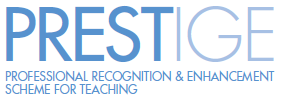Daniela de Silva
Alexander-Passe (2016) found that dyslexics suffer from low self-concept and self-efficacy, with low levels of engagement and other emotional coping strategies. As a consequence their motivation is affected. McGahey and Szumko (2007) state that specialist tutors know that in a support session, it is impossible to separate a person from their feelings. The emotional tone I set through my teaching and the attention I pay to the emotional well-being of my students is as important as the skills I teach and develop (Gibbs and Habeshaw, 1989). Therefore, trust is a key element in my teaching sessions as the student needs to feel ‘safe’ before he/she is able to explore how his/her neurodiversity impacts on their learning.
For instance, a first year international, mature student with a long standing diagnosis of dyslexia attended a writing session. However, this student also had an onset of anxiety stemming from the uncertainty of how her dyslexia will be viewed in a UK university. Additionally, she had family related challenges. “Close listening” (Herrington, 2001) is an exploratory and collaborative, power sharing learning approach during which my questions unravel the student’s feelings. Therefore, the first thing I explained to the student was that dyslexia is a way of processing information and not a deficit. This enabled her to realise that in the UK dyslexia is perceived as a different way of functioning rather than an impairment. Then, I suggested that at the beginning of each session we would spend five minutes during which she can tell me two or three things she feels anxious about. We would put these things in a Worry Box and then focus on the specialist skills. After she put away three things she was most anxious about, she felt listened to, she knew she was in a safe environment and this prepared her to engage with the writing strategy.
Point, Evidence, Comment (PEC) Hatfield et al (2014) is a cumulative and multi-sensory tool which aligns with neurodiverse perspectives and theories (Gillingham and Stillman,1958) and Orton (1967) offering a simple structure for academic writing. I told my student that PEC gives her clear signposts and enables her to move from description into critical analysis, evaluation and evidence (Greetham, 2008). I explained that the signposts, Point, Evidence, Comment will help her structure each paragraph and help her concentrate on one idea at a time in a different colour. As a result of this explanation, the student commented immediately that having the PEC 3D Prop with the different colours was a good visual reminder of what to do next. In this way, the student developed awareness of the writing process, honed in on critical thinking skills and gradually became an independent learner (Burwell and Kelly, 2013).
References
Alexander Passe,N.(2016).Dyslexia:Investigating selfharm and suicidal thoughts/attempts as a coping strategy. Journal of Psychology& Psychotherapy,5, 224
Burwell, B. and Kelly, B. (2013)
http://adshe.org.uk/wp-content/uploads/Good-Practice-Pack.pdf Accessed on 5.9.17
Gibbs,G and Habeshaw,T (1989). Preparing to Teach:Bristol: TES p.38
Gillingham, A .and Stillman, B.E.,(1969) Remedial Training for children with Specific Disability in Reading, Spelling and Penmanship, Cambridge, USA: Educators’ Publishing Service.
Greetham, B., (2008) How to Write Better Essays, 2nd ed., Hampshire: Palgrave Macmillan.
Hatfield, J., Horsman, T. and Szumko, J. (2014), ‘Navigating the essay: Making writing multi-sensory’, Journal of Writing in Creative Practice 7-2, pp. 311-339,
McGahey, P., & Szumko, J. (2007). Relationship at the Heart of Helping Retrieved from Brain HE:
Herrington, M., (2001) ‘Specialist Learning Support in Higher Education’ in M. Hunter-Carsch and M. Herrington (eds) Dyslexia & Effective learning , London, Whurr Publishers, pp. 170-192.
Orton, J.L., (1966) ‘The Orton and Gillingham Approach’, in J., Money (Ed.) The Disabled Reader: Education of the Dyslexic Child, Baltimore: The John Hopkins Press, pp. 119-145.
https://www.matchware.com/mind-mapping-software Accessed on 24.9.17

Teaching Practice Exchange (TPEx)
We welcome contributions from PRESTige HEA fellows. If you would like to contribute to this resource please contact us using the Get Involved link on the About page of the Centre for Teaching Innovation site and request a TPEx template.
